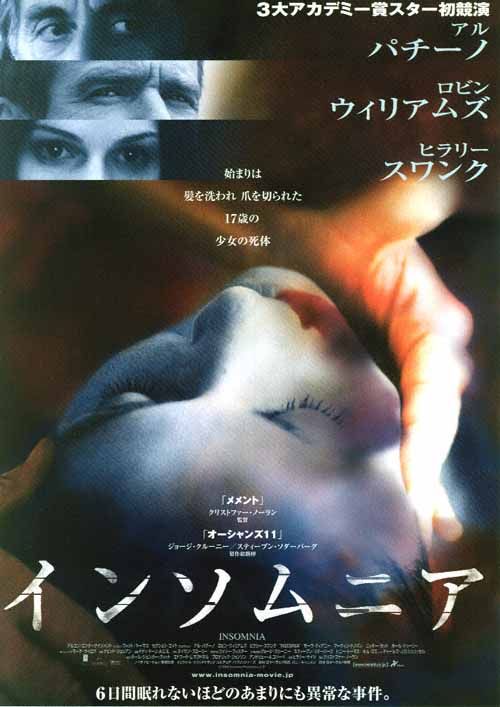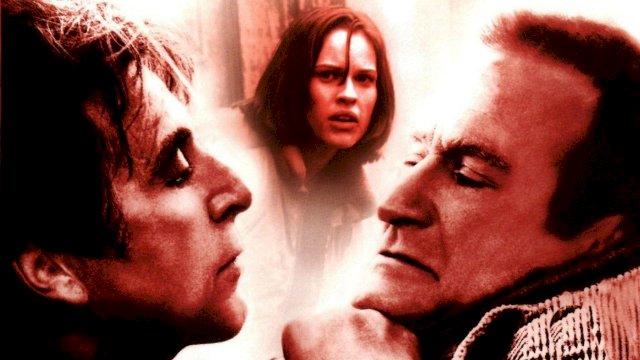
He also greatly complicates the simplistic setting of the shack where the cops lay their trap for the killer, adding snaking bridges and tunnels around the foggy area that demonstrate Nolan’s later Escherian designs in prototype.


In fact, Nolan makes that film’s climax, a chase along floating logs, its next to last sequence just so he can pack in an extra shootout at the end. One of Nolan’s talents is his ability to use his budget to its fullest extent, and he adds considerable panache to Skjoldbjærg’s basic setpieces. Nolan takes the more traditional, narrative-based path, but in his defense he wrings more tension out of his film despite his pedestrian style. The film trades thrills for chills, in other words, maintaining focus on the lead’s reactions to his failings instead of moving outward to see who might be on his tail. The Norwegian director does not much care for the suspense of whether the cops will catch the killer or, more insidiously, whether the protagonist will be discovered. Skjoldbjærg, on the other hand, stylizes the world around Engström: pure white light pours in from every window, and Skarsgård himself walks around in a perpetual flop sweat, his face so slack it threatens to give way and slide off completely. He also visualizes Dormer’s sleep-depriving thoughts through blasts of intercut flashbacks of his sins, a literal-minded glimpse into the protagonist’s mind. He casts the Alaskan hinterland in flat compositions and muted colors, highlighting the tedium that lulls Dormer even as it also keeps him awake. Nolan’s fetish for realism also comes into play. The Lady Macbeth touch of these images also speaks to his middlebrow sense of false depth, a bit of cleverness masquerading as subtlety. The clinical coldness of these shots, wherein even an extreme-close-up can feel removed, encapsulates Nolan’s arch style, while the inverted identity of the person unsuccessfully erasing the stain shows off his love of narrative twists. Nolan, on the hand, starts instead with a latex-gloved-thumb rubbing at a bloodstained sleeve. The griminess of this memory, vivid but abstracted with bleached light and cut in a fluid but overwhelming fashion, sets the standard for the director’s visceral take. Then the killer disposes of evidence in equally frenzied fashion, washing the victim’s hair, scrubbing his DNA from under her fingernails, etc.
#Insomnia film movie#
Skjoldbjærg opens his movie with raw, grainy footage of the crime in question, hands reaching from behind frame to throttle a terrified woman until her head slams on a protruding nail and she goes stiff. Stylistically, however, the two films sharply diverge. The most meaningful moral change, involves making the protagonist’s partner an old friend complicit in his transgression, introducing the tacit possibility that Pacino’s detective fulfills a subconscious desire when he accidentally kills the other cop.


Only a few tweaks change the plot in any way, mainly to add or expand action, differentiate the story. Slowly, the titular insomnia caused by the never-setting sun and suffocating guilt drive both men to the brink of mental collapse. When they try to spring a trap for the killer, each detectives accidentally kills his partner and finds himself drawn into a nerve-wracking blackmail scheme with the murderer who witnesses the inadvertent manslaughter. The filmmaker was Christopher Nolan, and his work on Insomnia (2002), when taken with Memento, set him on the path to becoming a blockbuster juggernaut.īut how does Nolan’s film compare to Skjoldbjærg’s original? In some ways, the two match almost exactly: both movies concern a disgraced forensics expert (Stellan Skarsgård’s Engström in the original, Al Pacino’s Dormer in Insomnia 2002) helping a murder investigation in a northern tundra during the excessively long daylight hours of summer. Five years later, a filmmaker looking for a crossover hit after a critical breakthrough used a remake of this picture to establish his cred with studios. Its protagonist’s guilt manifests itself in harsh, unending light, always there, always in the open and preventing any kind of rest. Erik Skjoldbjærg’s 1997 thriller Insomnia did for film noir what Stanley Kubrick’s The Shining did for horror: wrest the genre from the night into the harsh glare of daylight to prove that the same basic elements could be just as atmospheric and unsettling in plain view as they are hidden in shadow.


 0 kommentar(er)
0 kommentar(er)
